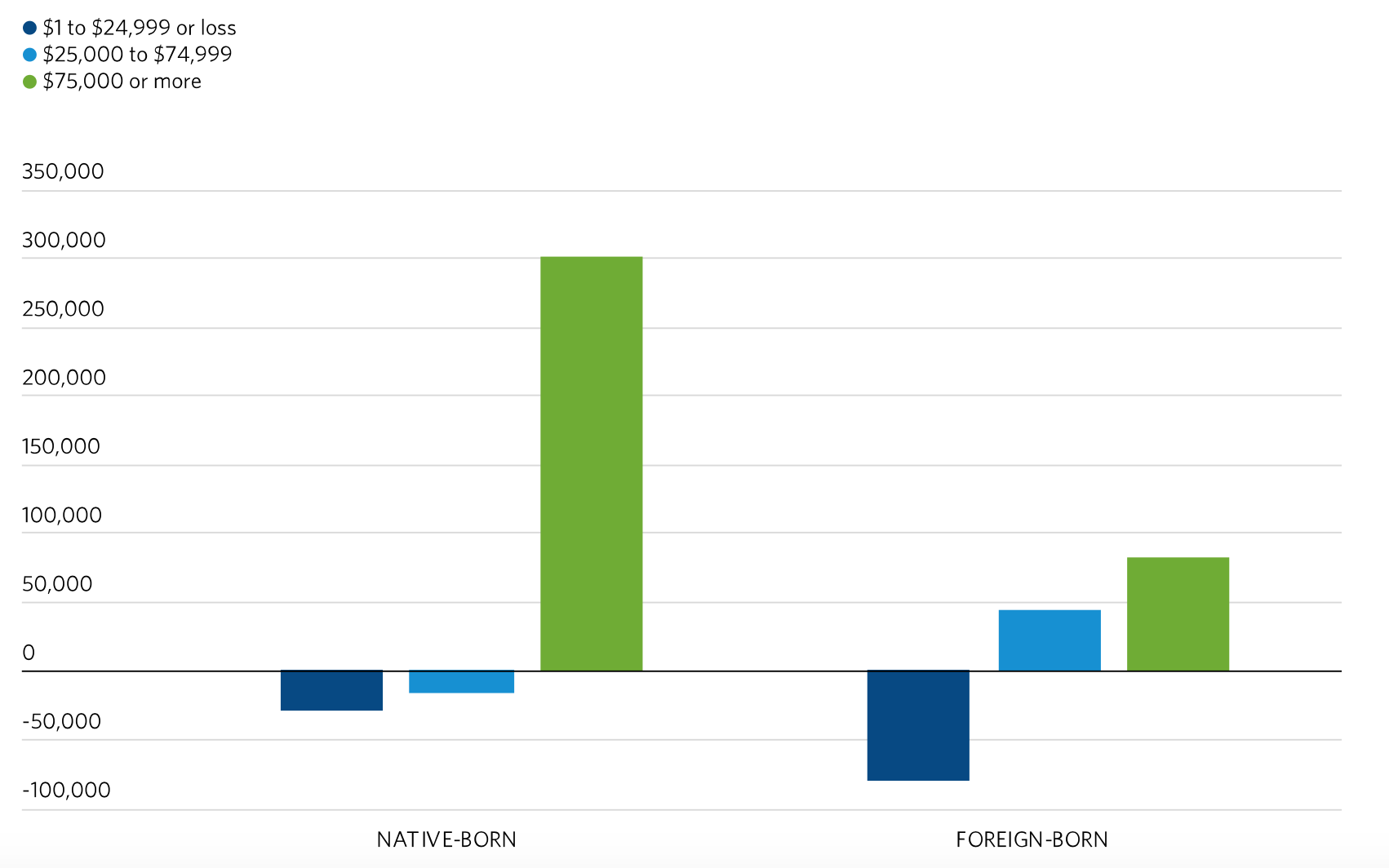
Out of the 53 metro areas with more than a million people, only four lost population last year. The two biggest losers were Pittsburgh and Chicago.
Both cities are ones where a significant cadre of local boosters brush off population loss, arguing that a closer look shows that they actually are undergoing a demographic transition that is actually putting them in a stronger position. So let’s take a look.
In Pittsburgh’s case, you have a city that was devastated by the steel collapse, lost a generation of people, and now skews very old. Pittsburgh is the only metro area in the country with natural decrease in population. That is, more people are dying than being born. Pittsburgh’s natural decrease last year was -3,825. Pittsburgh also has net domestic outmigration, last year to the tune of -8,633. However, a good chunk of these are likely retirees; the top net migration destination for Pittsburgh is Florida.
However, Pittsburgh’s share of young people with degrees has been surging. It added over 50,000 of them since 2000, an increase rate of 52% that was tops in the Midwest. Their share of young adults with college degrees increased by over 14 percentage points. This is a big contrast to regions like Detroit and Cleveland, which in addition to their poor headline demographics, had low growth in young adults with degrees. Pittsburgh’s international migration isn’t particularly high at 4,359, but I believe is mostly highly educated immigrants.
Folks like Christopher Briem and Jim Russell have already written voluminously on Pittsburgh so I won’t say more.
Chicago is another interesting case. Chicago’s population problems seem to be driven by three factors, which are different from Pittsburgh:
1. The continuing loss of black population, especially in the city but also in the region.
2. A collapse in Mexican immigration (which had been Chicago’s biggest source of new immigrants).
3. A significant migration loss from people making less than $75,000 per year, and especially less than $25,000 per year.
None of these forces appear to make the upscale classes of Chicago sad. You certainly don’t hear anyone sounding the alarm about black population loss, and saying that the city needs to do something about it. In fact, the city’s ineffective policing would appear to be a contributor to driving blacks out, meaning black population decline is de facto public policy.
Likewise, the community seems blasé about the collapse in immigration. We are constantly assured that a steady flow of immigrants is a necessity for urban success. Back when the immigrant flow was positive, you’d hear local boosters talk about how Mexican immigration saved Chicago, and well as the frequently cited (as it turns out) poorly substantiated claim that 26th St. was the busiest retail strip in the city apart from Michigan Ave. But now that the Mexicans aren’t coming anymore, all of a sudden it’s no longer a big deal civically.
As for the loss of lower earning population, the Chicagoland Metropolitan Agency for Planning (CMAP) published a recent study on this. Interestingly, it was timed with the census estimates release, but does not really draw on them for its conclusions on this point. It would appear that they had some of this analysis in the can, and were anticipating that the census data would be bad news. Here’s their chart:

Again, I’m not hearing people shed a lot of tears over this.
As the CMAP study indicates, Chicago has been attracting a large number of high end earners and highly educated people, especially to the North Side of the city. This part of the city is booming.
Pete Saunders has described the situation in Chicago as “one-third San Francisco, two-thirds Detroit.” (Interestingly, author Andrew Diamond appears to have jacked Pete’s formulation by calling it “a combination of Manhattan smashed against Detroit.”) The surge in high education, high income residents, combined with black population loss, a collapse in low skill immigration, and a bleed off of lower education, lower income residents should shift the ratio in the city over time, maybe towards 50% San Francisco, 50% Detroit.
That kind of demographic shift would give the city of Chicago a composition closer to those of coastal elite cities, which is probably one reason it is tacitly desired by many locals. (Increasing tax rates actually fuels this transition as well, so the fiscal mess will be an accelerant).
Beyond troubling questions of equity – see this Atlantic piece on Chicago’s divide – it’s unclear whether this is something Chicago can actually pull off successfully. For one thing, it is almost entirely a city phenomenon. Most of the positive analysis on Chicago focuses on the city proper, or even subareas of it. It’s harder to generate great stats on the region.
Weak population dynamics also affect things like the housing market. Chicagoland has more underwater mortgages than New York and LA combined. Chicago’s housing market was dead last in appreciation among major markets last year – even worse than Cleveland. Demographics will be a drag on the region in ways like this.
A more elite city in a demographically declining region and state also has downsides. Those elite sectors of the city will be called on to pay the bills for everyone else, just as happens in California and New York. Can the Greater Loop and North Side of the city generate enough wealth to pay the freight for the rest of a sclerotic Illinois? It’s hard to say.
So like Pittsburgh, Chicago is not just in demographic decline, but also in part in demographic transition. Where that leads is a question only the future will tell.
This piece originally appeared on Urbanophile.
Aaron M. Renn is a senior fellow at the Manhattan Institute, a contributing editor of City Journal, and an economic development columnist for Governing magazine. He focuses on ways to help America’s cities thrive in an ever more complex, competitive, globalized, and diverse twenty-first century. During Renn’s 15-year career in management and technology consulting, he was a partner at Accenture and held several technology strategy roles and directed multimillion-dollar global technology implementations. He has contributed to The Guardian, Forbes.com, and numerous other publications. Renn holds a B.S. from Indiana University, where he coauthored an early social-networking platform in 1991.
Photo: Tim Tierney [CC BY-SA 4.0], from Wikimedia Commons












